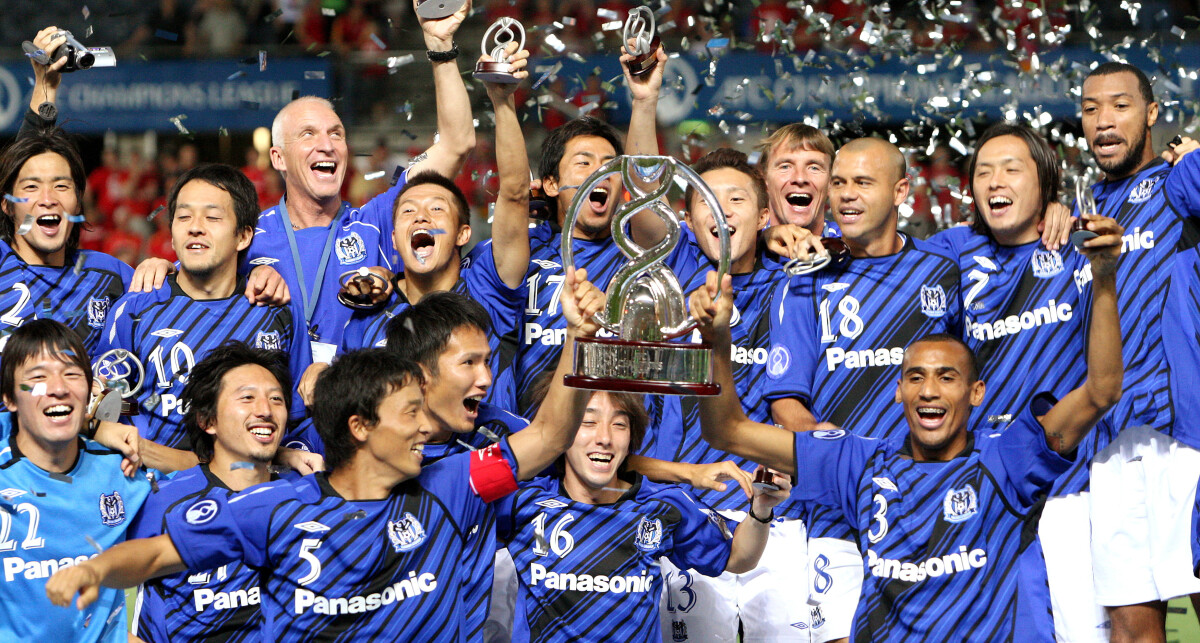Step onto the pitch as we unmask the world of Japanese football clubs. From the vibrant atmosphere of the J-League to their innovative training methods, there’s always something captivating happening on the field. With a perfect blend of passion, skill, and tradition, Japanese football has consistently impressed fans across the globe.
In this article, we delve into the fascinating world of Japanese football clubs, peeling back the layers to reveal the unique characteristics that set them apart. We explore the rich history, the relentless dedication of players, and the strategies they employ to achieve success. From giants like Yokohama F. Marinos to underdogs like Vegalta Sendai, each club embodies their own captivating story.
Evolution of Japanese football
Japanese football has a rich history that dates back to the late 19th century. Introduced by British merchants and students, the sport quickly gained popularity among the Japanese youth. In 1921, the Japan Football Association (JFA) was established, paving the way for the formation of the first professional league in 1965, known as the Japan Soccer League (JSL).
Over the years, Japanese football has evolved significantly, with the establishment of the J-League in 1993 marking a turning point for the sport. The J-League introduced a new era of professionalism, attracting top international players and increasing the overall competitiveness of Japanese football.
Today, Japanese football clubs are known for their technical proficiency, tactical discipline, and emphasis on teamwork. The sport has become deeply ingrained in Japanese culture and continues to grow in popularity.
Structure of the Japanese football league system
The Japanese football league system consists of multiple tiers, with the J-League being the top division. Below the J-League, there are three divisions in the J-League, namely J1, J2, and J3. Each division features a varying number of teams, with promotion and relegation between divisions based on performance.
Additionally, there are regional leagues that operate alongside the J-League system, providing opportunities for clubs to compete and progress through the ranks. These regional leagues act as a feeder system, allowing talented players to showcase their skills and potentially earn a spot in a professional club.
The structure of the Japanese football league system ensures a competitive environment, fostering the development of both players and clubs at all levels.
Popular Japanese football clubs
Japanese football is home to several popular clubs that have captured the hearts of fans across the country. One such club is Yokohama F. Marinos, who boast a rich history and a passionate fan base. Known for their attacking style of play, the Yokohama F. Marinos have consistently been a force to be reckoned with in the J-League.
Another noteworthy club is Vegalta Sendai, who have gained a reputation as underdogs and fan favorites. Despite facing financial challenges, Vegalta Sendai has displayed exceptional resilience and dedication, capturing the imagination of football fans with their never-say-die attitude.
Other notable clubs include Urawa Red Diamonds, Kashima Antlers, and Kawasaki Frontale, each with their own unique characteristics and loyal fan bases.
Key players and managers in Japanese football
Japanese football has produced a number of talented players who have made a significant impact both domestically and internationally. One such player is Shinji Kagawa, who rose to prominence during his time at Borussia Dortmund in the German Bundesliga. Kagawa’s technical skills and ability to score crucial goals have made him one of the most successful Japanese footballers of all time.
Another influential figure in Japanese football is manager Hajime Moriyasu. Known for his tactical acumen and ability to develop young talent, Moriyasu has led the Japanese national team to success, including winning the AFC Asian Cup in 2019.
These individuals, along with many others, have played a crucial role in raising the profile of Japanese football on the global stage.
Stadiums and fan culture in Japanese football
Japanese football stadiums are renowned for their vibrant atmosphere and passionate supporters. From the iconic Nissan Stadium in Yokohama to the Saitama Stadium in Urawa, these venues come alive on match days, creating an electric environment that fuels the players’ performances.
Fans in Japan are known for their unwavering support and unique traditions. From coordinated chants and colorful banners to the energetic wave known as the “Mexican Wave,” Japanese football fans bring an unparalleled level of enthusiasm to the stands.
The strong bond between the fans and the clubs creates a sense of unity and belonging, making the Japanese football experience truly special.
Success stories in Japanese football
Japanese football has witnessed numerous success stories and memorable moments throughout its history. One of the most significant achievements came in 2011 when the Japanese national team won the FIFA Women’s World Cup, defeating the United States in a thrilling final. This victory not only showcased the talent and determination of the Japanese players but also inspired a generation of young footballers.
On the club level, the success of the Urawa Red Diamonds in winning the AFC Champions League in 2007 stands out as a remarkable achievement. This victory not only put Japanese football on the map but also demonstrated the quality and competitiveness of Japanese clubs in Asian football.
These moments of triumph and resilience have left a lasting impact on Japanese football, shaping its future and inspiring players and fans alike.
Challenges and controversies in Japanese football
Despite its success, Japanese football has faced its fair share of challenges and controversies. One of the key challenges is the struggle to retain top talent within the domestic league. Many talented Japanese players opt to pursue opportunities abroad, leaving a void in the local clubs and hindering the growth of Japanese football.
Additionally, there have been instances of match-fixing and corruption scandals that have tarnished the reputation of Japanese football. These controversies highlight the need for strict regulations and ethical conduct to ensure the integrity of the sport.
While these challenges exist, Japanese football continues to evolve and adapt, finding solutions to overcome these obstacles and maintain its upward trajectory.
International recognition and impact of Japanese football
Japanese football has gained significant international recognition and has had a profound impact on the global stage. The success of Japanese players in top European leagues, such as Shinji Kagawa and Keisuke Honda, has raised the profile of Japanese football and opened doors for future generations.
Furthermore, Japanese clubs’ participation in international competitions like the AFC Champions League has provided valuable exposure and opportunities for Japanese players to compete against some of the best teams in Asia.
With its unique style of play and dedication to continuous improvement, Japanese football is well-positioned to continue making strides on the international stage.
Conclusion
As we conclude our exploration of Japanese football clubs, it is evident that the sport has come a long way and has a bright future ahead. With a rich history, passionate fan culture, and talented players, Japanese football continues to captivate audiences both at home and abroad.
However, there are still challenges to overcome, such as retaining top talent and ensuring the integrity of the sport. By addressing these challenges and capitalizing on the strengths of Japanese football, the future looks promising for Japanese clubs to further establish themselves on the global stage.
Bolton wanderers football club
Estimating The Football Score predictions
English Football Clubs Match Predictions
Guide to Choosing the Perfect Football Academy in Europe
How San Marino Football Defies the Odds
Colchester and district youth football league
The Dominance of Football Clubs in Belgium

